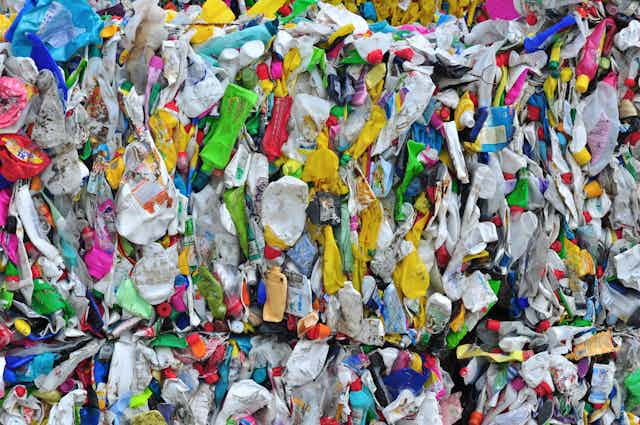It is becoming more and more obvious that we need to drastically change how we use plastics. While we need improve our recycling infrastructure, we also need to help communities reduce plastic packaging waste and plastic litter.
The public is ready for change. Blue Planet II, in particular, has brought the plastics crisis to public attention. Since it was screened, over 500 articles on plastics have appeared in British national publications alone.
And just as the Blue Planet II crew described how they “collected every piece of plastic they came across while filming”, these plastic waste stories have motivated some people to take action. People have proposed bans on plastic products or gone “plastic free” as a household or community. Social media campaigns and petitions now lobby for change.

Yet the media stories with their sad images of death and choked seas can be overwhelming. Where to start? With a problem of this scale, it’s easy to feel as if individual and local actions won’t matter. Experts often tend to tell this kind of “science stories” to – not with – the public and this can compound the problem. The human stories behind the waste raise complex issues of social inequality. People may feel preached at or harangued, as if they are obstacles, rather than partners for change.
Recognising these challenges, we began to research with the public to explore creative ways to change our relationship to plastics.
Building plastic literacy
Our group held workshops in Stoke on Trent, Staffordshire, last November. Participants were recruited by B Arts, a local arts charity. They were already interested in the plastic waste crisis and wanted to learn more. We offered them interactive displays, film clips, and – best of all – a chance to work with artists to make collaborative artworks using different kinds of waste plastic.
In these art sessions, people were puzzled by the tiny numbers on the bottom of bottles. These are the Resin Identification Codes, 1 through 7. The RIC doesn’t mean a product is always accepted for recycling, but it does tell you what material it is made of. By making artworks, people taught themselves about RICs. They found it easiest to model, cut, bend or make stuff with the highest-value, easiest-recycled plastics – RICs 1 and 2.

People found out that the same material (RIC code) could have different forms or textures. And that a large number of contemporary materials have plastics mixed into them as composites or have hidden layers of plastic inside, or they shed it in small amounts, either as fibres or when they decompose. As people discovered that they could begin to spot both the easily recyclable and the less-recognisable plastics, they began to tell their own stories about plastic in images and words.
People want to develop their own expertise. They feel most knowledgeable – most “plastic literate” – and motivated to act when they make their own art, shoot their own images, and tell their own plastic stories themselves. Here’s how:
Creative ways to edge out of the plastics crisis
- Do your own “making” with waste plastic materials
Nothing beats trying to make waste into something new to help people figure out how plastics differ. Whether it’s making models, junk modelling, making artworks, hands on work helps people learn what the RICs mean for the potential of the material to be reused. People come away with a better understanding of what materials they would want to avoid and why. And they learn which are collected by their local council and which can most easily be recycled into new products.

- Tell your own plastics stories
Imaginative exercises in telling the local stories of plastics – what they are used for, how they are valued, how they are discarded – gives people ownership of the local aspects of the plastics problem. Eliciting people’s own stories about how they use plastic at home, in school, and while travelling can be enabling. Having control over their story lets them spot where changes can be made without having someone preach to them.
- Visualise waste plastics
Photographs and video of plastic waste and its effects in people’s own environment helps to personalise what they know. When they can incorporate their own knowledge of the materials and how to handle them responsibly, people are then happy to ask further questions and seek more information.
- Join the DIY community
Making “plastic-free” replacement items for common plastics is a burgeoning field of DIY for crafty types. One participant suggested a follow up workshop to learn how to make beeswax-infused cloth “wraps” that could replace cling film. Our participants found advice on plastic-free DIY or “zero waste” creations – and shopping – online. There are numerous blogs and online shops, as well as new high-street stores, being set up to advise (and supply) people who want to go “plastic free”.

- Innovate new products
The most advanced creative responses come from individuals and groups recycling waste plastic into new commercial products. They give a second life to materials that might go to landfill or incineration, or simply sit in storage, waiting for the market to improve. Recognising the innovators – even those working on bench-tops and garages – in our midst will help to create a knowledgeable market for items made from recycled plastics.
The global lessons of Blue Planet II need to be made local. By beginning with the materials themselves, then moving to people’s own stories, we can help people create, innovative and responsibly reuse, reduce or replace plastics in their everyday lives.

